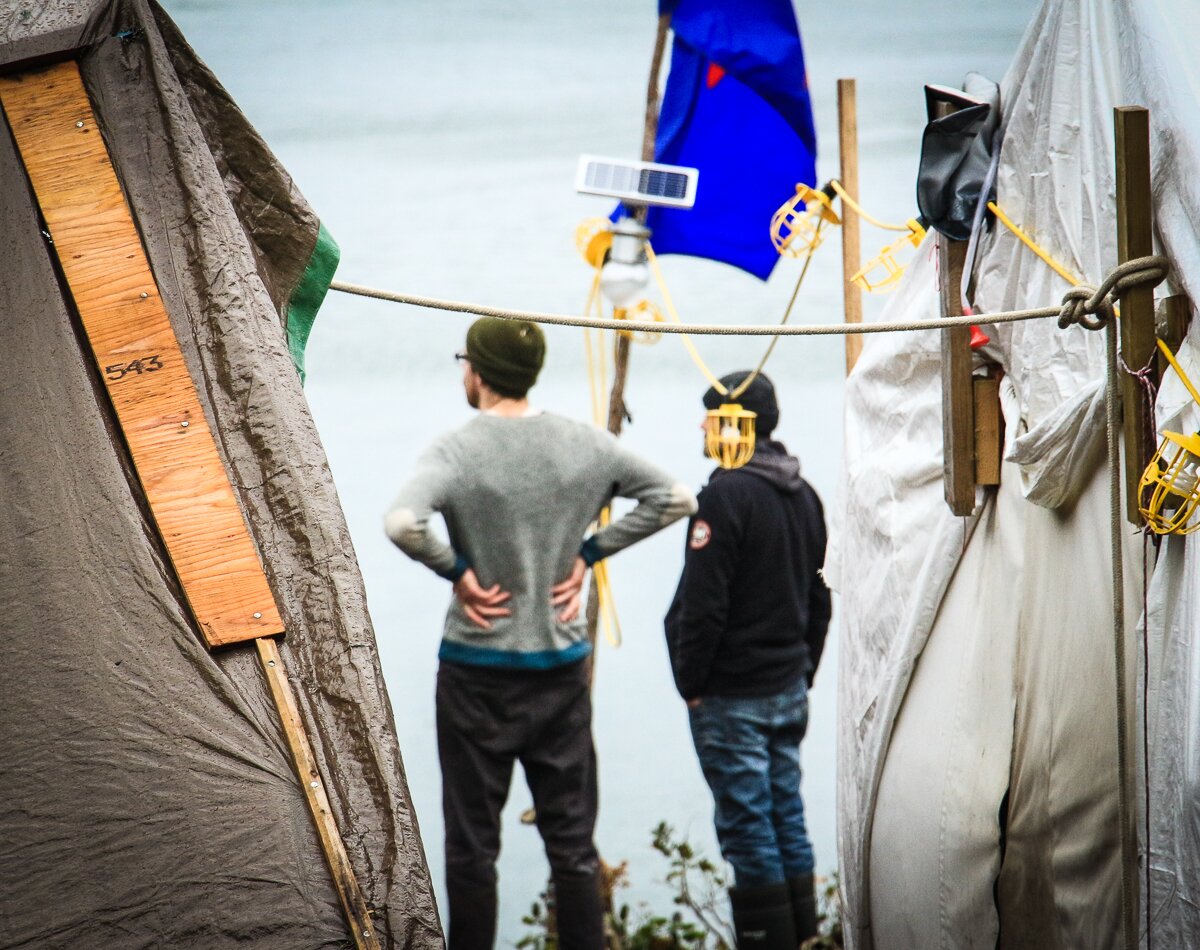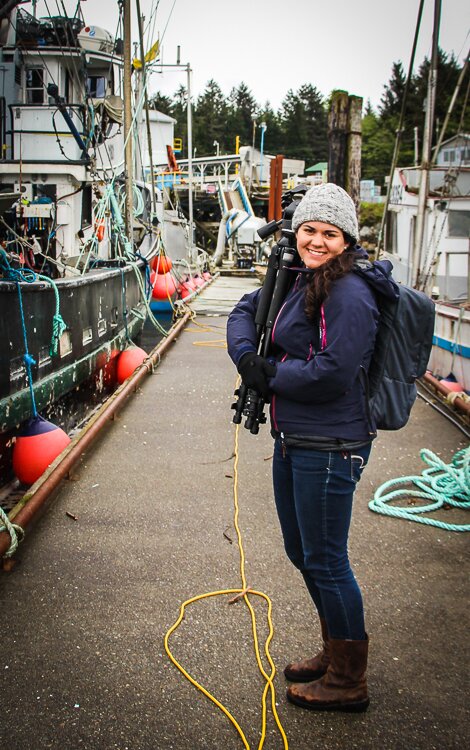A difficult search for "the truth" in northern B.C.
On assignment to investigate the impact of a proposed LNG project on a First Nations community, one reporter ended up challenged by some fundamental questions about her professional identity and duty to "the truth".

A compass will not always point you in the right direction. That’s because the difference between magnetic north (where your compass points) and true north (the geographic north pole) changes. To adjust for this, you need to adjust the compass for something called declination.
It’s a simple twist of a dial by a few degrees until the variation between magnetic north and true north is accounted for. Like a magnetic compass, depending on where you find yourself, you might need to adjust the declination of your moral compass. Unlike a magnetic compass, the process is not so simple.
In late April and early May, I found myself on assignment in Lax Kw’alaams, a small and isolated First Nations village north of Prince Rupert in British Columbia. My reporting partner, Brielle Morgan, and I were there to find out how people in the region accessed accurate information about proposed liquified natural gas (LNG) projects.
Here’s the thing: when we arrived my (journalistic) moral compass was working just fine. The little red needle that I look at to make sure I’m on track, doing responsible and meaningful work, was pointing me towards my duty as a journalist: “the truth.”

And that’s where things got complicated. We ran into situations where the truth might do more harm than good, not just for an individual, but perhaps for an entire community or an entire race.
A lot of the stories we heard involved allegations of political corruption, violence and tribal infighting. Besides the obvious challenge and duty to substantiate such allegations we found ourselves asking what good or what harm it would do to report on issues that might perpetuate negative stereotypes of Indigenous people.
We assessed the potential impacts of every quote on its source: The young woman who told us she felt isolated in her own community, unable to speak her mind about LNG. The band employees, too afraid to speak on the record because band council holds the power to decide who gets jobs in the band’s corporate sectors. And of course, the fisherman, who said he had received death threats for his role as a loud and prominent anti-LNG force in the community.
We grappled with the implications of telling a story that we weren’t even sure belonged to us, or how much of it was ours to tell. While LNG is a Canadian question, who are we as Canadian journalists to parachute into an Indigenous community to write about how that question was affecting them?
As a Canadian journalist, I really do serve the truth. But as a journalist on Indigenous territory, whose truth am I serving, which people? Canadians and their truth, or First Nations and their truth? What surprised me the most these past weeks is how different those two truths can be and how unequipped I am to sort through that.
“Never forget that your obligation is to the people. It is not, at heart, to those who pay you, or to your editor, or to your sources, or to your friends, or to the advancement of your career. It is to the public,” said the late Ben Bagdikian, the reporter behind the Pentagon Papers and the former national editor of the Washington Post.
But, if a journalist’s duty is not to the truth, but to the people as Bagdikian opined, how then do journalists move forward when the truth and the people that you’re serving are in conflict? How do we report when the truth would do more damage than good? And how do we navigate those questions when working in a community that has already been so deeply wronged for so long?
It’s a personal question, but also a professional one: I want to be part of the solution, part of reconciliation. I want to at least try to answer the calls of the Truth and Reconciliation Commission that apply to me, and to the media as a whole. I don’t want to do further harm to First Nations communities, perpetuate negative stereotypes or project my colonial Canadian lens onto important Indigenous stories. I want to be a part of the healing process, but I don’t know how to do that ethically.
So lately I’ve been playing around with my compass’ declination a little bit, spinning the dial to the left and right to see where I might land differently with each new trajectory. If I spin it a bit in one direction, I land in a place where Indigenous communities help journalists decide what stories are important to tell and how to tell them in a respectful way; in a way that supports reconciliation. If I spin it the opposite direction, I land in a place where journalists as outsiders decide what stories need to be told, regardless of the potential impacts those stories might have on a community.
Or course, the right path is somewhere in the middle. It’s a place where no unnecessary harm is done to individuals or communities and at the same time, those in power from the federal to the tribal levels are held to account. The struggle I’m going through right now is adjusting that dial a little bit here and there throughout the journey, figuring out when to serve the truth first and when to serve the people first when the two don’t align.
Most of the time, we have reference points and know where to set the declination, how many degrees of variation are needed to keep us on the path. But when we are in uncharted territory and trying to do something new and different we will make mistakes and end up lost along the way. It’s challenging and it takes guts but it will hopefully land us in a place where Canadian journalism and First Nations communities can work together to further reconciliation and the country as a whole.
